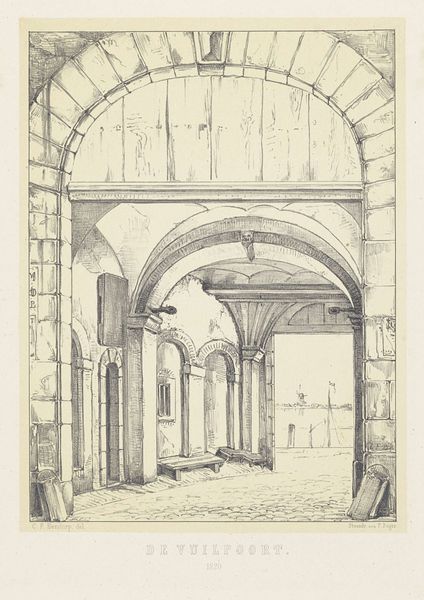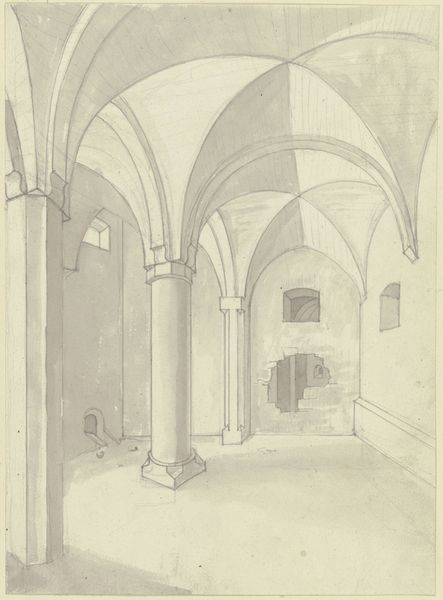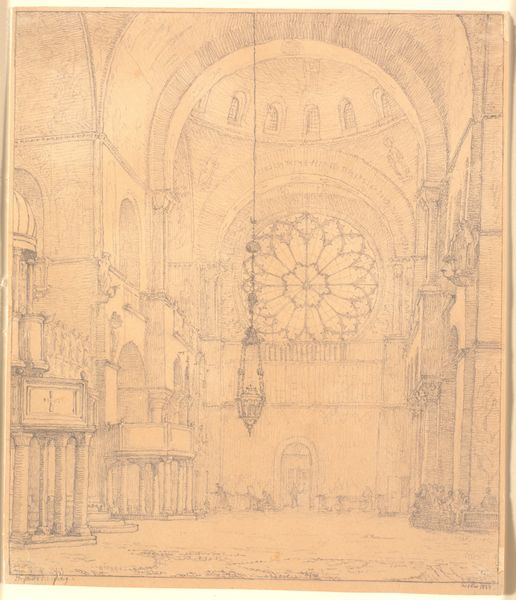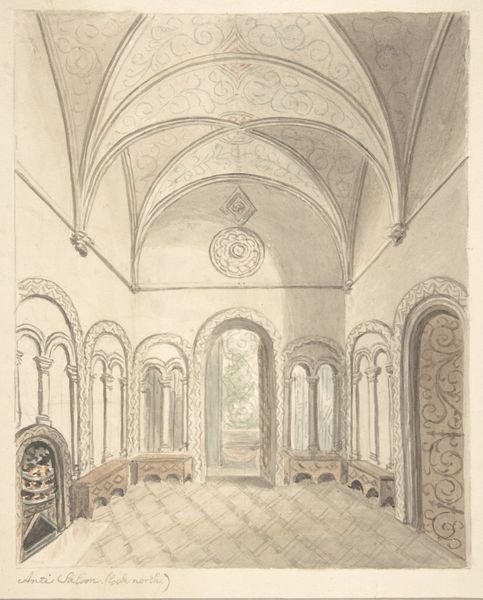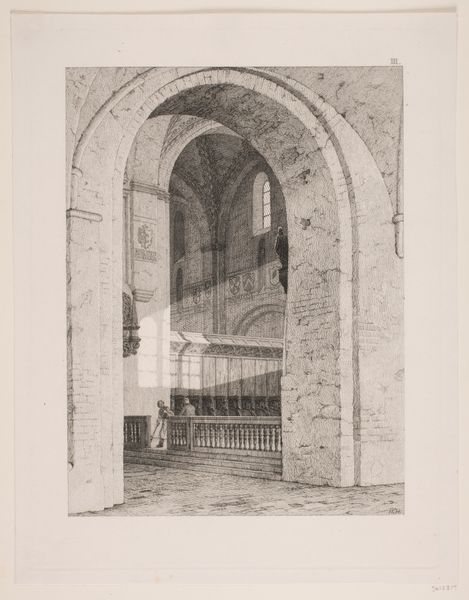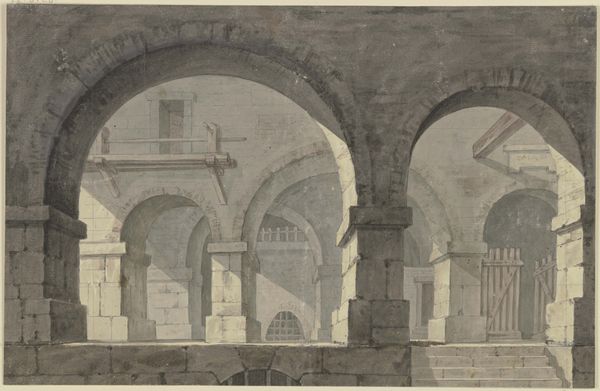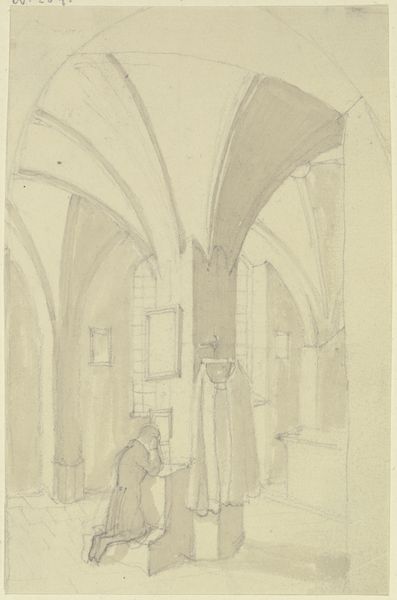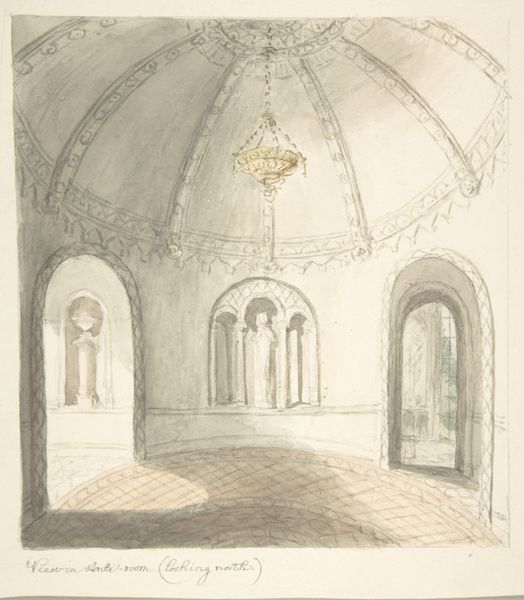
drawing, pencil, architecture
#
drawing
#
neoclacissism
#
etching
#
form
#
pencil
#
line
#
architecture
#
realism
Editor: So, this is Christen Købke's pencil drawing, "Galla Placidias' grav i St.Nazareo Capel i Ravenna" from 1838, currently held at the SMK. The scene depicts the interior of a chapel; it has a sort of quiet, contemplative feel to it. How do you interpret this work, considering its historical context? Curator: This piece offers a glimpse into 19th-century Neoclassicism and its preoccupation with historical spaces, but it's crucial to consider it through the lens of power and representation. Köbke’s rendering of Galla Placidia's tomb isn't merely a neutral depiction. What sociopolitical ideas do you think the artist was possibly thinking when deciding to include a figure that appears to be sketching? Editor: I hadn't really considered that, but maybe that artist within the drawing stands for the artist interpreting or appropriating history? And the choice of the chapel could speak to issues of religious authority? Curator: Precisely! The artistic choice directs us towards critical inquiries about how such sacred spaces become objects of artistic study, how the stories they hold are told, and whose voices get amplified in the process. Who was Galla Placidia and what do we know about her? Does she have a place here? And, further, who can control how legacies live on? Editor: That's a great point, I think looking into Placidia's role as a woman of power would certainly add layers to this piece! It also challenges my initial assumptions about its serenity and points to larger social implications. Curator: Exactly. It prompts us to question whose narratives dominate our understanding of history and art. We should remain critical. Editor: It certainly will impact how I look at this work from now on, it will be from a very different perspective! Thank you.
Comments
No comments
Be the first to comment and join the conversation on the ultimate creative platform.
